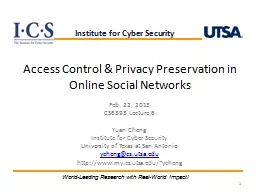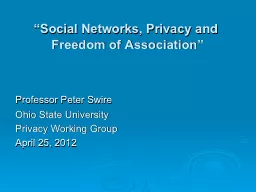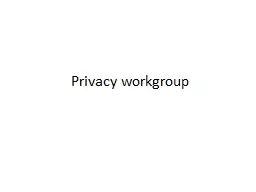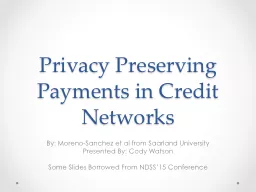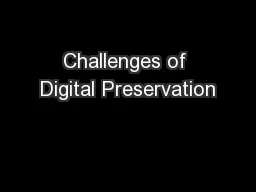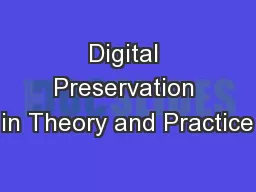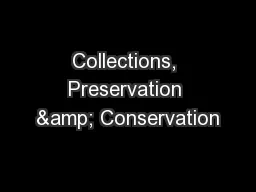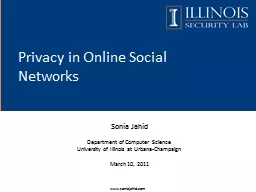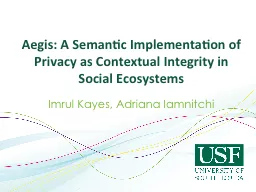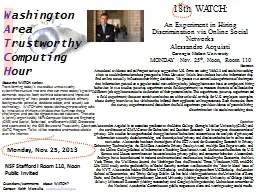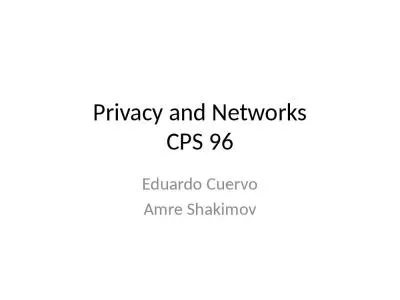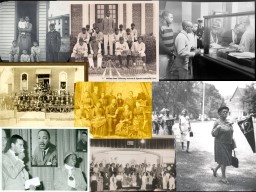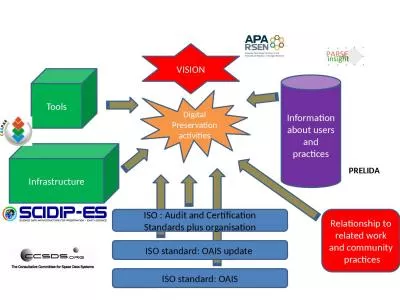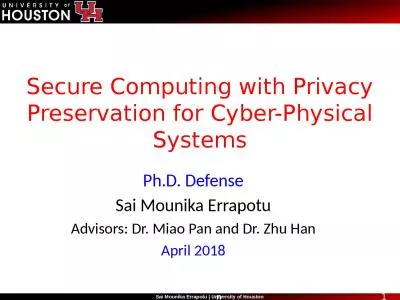PPT-Access Control & Privacy Preservation in Online Social Networks
Author : yoshiko-marsland | Published Date : 2018-11-18
Feb 22 2013 CS6393 Lecture 6 Yuan Cheng Institute for Cyber Security University of Texas at San Antonio ychengcsutsaedu httpwwwmycsutsaeduycheng 1 Institute for
Presentation Embed Code
Download Presentation
Download Presentation The PPT/PDF document "Access Control & Privacy Preservatio..." is the property of its rightful owner. Permission is granted to download and print the materials on this website for personal, non-commercial use only, and to display it on your personal computer provided you do not modify the materials and that you retain all copyright notices contained in the materials. By downloading content from our website, you accept the terms of this agreement.
Access Control & Privacy Preservation in Online Social Networks: Transcript
Download Rules Of Document
"Access Control & Privacy Preservation in Online Social Networks"The content belongs to its owner. You may download and print it for personal use, without modification, and keep all copyright notices. By downloading, you agree to these terms.
Related Documents

